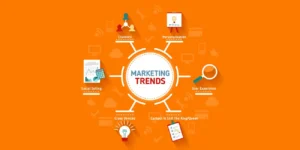In the past, sustainability was often seen as a “nice-to-have” or a corporate social responsibility checkbox. But in today’s economy, sustainability is a business imperative—and more importantly, a strategic advantage.
From rising consumer expectations and regulatory changes to long-term cost savings and brand loyalty, going green is no longer just good for the planet—it’s good for your profits.
In this blog, we’ll explore why sustainability matters in business, how it can positively impact your bottom line, and provide actionable steps to embed sustainability into your business strategy.
What Is Business Sustainability?
Business sustainability refers to practices that support long-term ecological balance, social responsibility, and economic performance. It involves operating in a way that meets present needs without compromising future generations.
Sustainability in business can include:
- Reducing carbon emissions and waste
- Ethical sourcing and fair labor practices
- Minimizing energy and water use
- Offering eco-friendly products and services
- Supporting community development
At its core, sustainable business is about creating value for all stakeholders—not just shareholders.
Why Sustainability Is More Than a Trend
The market is changing, and so are consumer expectations. Consider these stats:
- 73% of global consumers say they would change consumption habits to reduce environmental impact.
- 62% of executives consider a sustainability strategy necessary to be competitive today.
- ESG (Environmental, Social, Governance) assets are expected to reach $53 trillion by 2025—over a third of all global assets under management.
Sustainability is not just a corporate responsibility—it’s a financial and strategic necessity.
How Sustainability Boosts Your Bottom Line
Let’s break down how going green leads directly to increased profitability and resilience.
1. Cost Savings and Efficiency
One of the most immediate benefits of sustainability is operational efficiency. Reducing waste, conserving energy, and optimizing resources not only lowers your environmental impact—it lowers your costs.
Examples:
- Switching to LED lighting or smart thermostats
- Using energy-efficient equipment or vehicles
- Implementing a paperless office or digital invoicing
Result: Lower utility bills, reduced material waste, and fewer costly inefficiencies.
💡 A McKinsey report found that companies with effective sustainability strategies reduce costs by up to 20%.

2. Brand Loyalty and Customer Preference
Today’s consumers are more values-driven than ever. Brands that demonstrate commitment to sustainability win loyalty, especially among Millennials and Gen Z.
What this means:
- Shoppers actively seek out green products and transparent companies
- “Greenwashing” (pretending to be eco-conscious) is easily exposed and penalized
- Purpose-driven brands often enjoy higher price premiums
Stats:
- 90% of Millennials say they’re willing to pay more for sustainable products
- 66% of global consumers consider sustainability when making a purchase
Result: Increased customer retention, greater willingness to pay, and stronger brand equity.
3. Investor and Stakeholder Appeal
Investors are increasingly incorporating ESG criteria into decision-making. Sustainable companies are considered lower risk and more future-proof.
What this means:
- ESG performance attracts more funding and partnerships
- Sustainability transparency can enhance credit ratings
- Publicly traded companies often see stock price benefits tied to sustainability rankings
Result: Access to capital, improved valuation, and reduced cost of borrowing.
4. Regulatory Compliance and Risk Reduction
Governments are tightening environmental regulations. Failing to adapt can mean hefty fines, lost licenses, or reputational damage.
Examples:
- Carbon pricing policies
- Plastic bans or packaging mandates
- Emissions reporting requirements
Companies that lead on compliance face less legal risk and can innovate ahead of regulations, gaining first-mover advantages.
5. Talent Attraction and Retention
Top talent—especially younger professionals—want to work for companies that align with their values.
What this means:
- A strong sustainability mission boosts employee engagement and loyalty
- It improves recruitment and reduces turnover
- Internally, employees become brand ambassadors and drive innovation
Result: Lower hiring costs, higher productivity, and a more motivated workforce.
Real-World Examples of Green Business Success
1. Patagonia
The outdoor apparel company is a sustainability icon. They encourage customers to repair rather than replace gear and donate a portion of profits to environmental causes. In return, they enjoy one of the most loyal customer bases in the world.
2. IKEA
IKEA aims to become climate-positive by 2030. By investing in solar panels, sustainable sourcing, and recycling, they’ve reduced emissions and built consumer trust—while maintaining strong profits.
3. Unilever
Unilever’s Sustainable Living brands, including Dove and Seventh Generation, grow 69% faster than other brands in its portfolio, proving that green products can drive superior financial performance.
4. Interface
A global carpet manufacturer, Interface reduced greenhouse gas emissions by 96% and water use by 88%, while increasing profit margins and transforming into a global sustainability leader.
How to Make Your Business More Sustainable
You don’t need to be a Fortune 500 company to go green. Here’s how small and midsize businesses can embed sustainability into their operations:
1. Conduct a Sustainability Audit
- Measure your carbon footprint, waste output, and resource usage
- Identify inefficiencies or high-impact areas
2. Reduce Waste and Energy
- Go paperless
- Install LED lighting and smart devices
- Recycle office materials and electronics
3. Offer Sustainable Products or Services
- Use recycled or ethically sourced materials
- Package products in biodegradable or reusable materials
- Promote services that help clients be more sustainable
4. Green Your Supply Chain
- Choose eco-conscious vendors
- Optimize shipping routes and packaging
- Build transparency into sourcing and labor practices
5. Engage Employees and Customers
- Launch green initiatives (carpooling, composting, volunteer days)
- Educate customers through content and labeling
- Promote your sustainability story in marketing
6. Set Goals and Track Progress
- Commit to measurable sustainability goals (e.g., reduce carbon by 25% in 3 years)
- Use tools like GRI or B Corp assessments
- Report results annually to maintain accountability
Conclusion: Sustainability Is Smart Business
Sustainability is no longer a luxury or a side project—it’s a driver of innovation, differentiation, and long-term value. Businesses that embrace green practices enjoy stronger brands, loyal customers, operational savings, and a competitive edge in a crowded market.
As the world becomes more environmentally conscious, the question is no longer “Can we afford to go green?”—
It’s “Can we afford not to?”
Start small, be authentic, and commit to continuous improvement. Your bottom line—and the planet—will thank you.
Ready to Make Sustainability Part of Your Strategy?
Here’s a simple checklist to get started:
✅ Conduct a sustainability audit
✅ Set one measurable goal this quarter
✅ Choose one area (waste, energy, product) to improve
✅ Share your progress with your customers
Need help building a sustainability roadmap or messaging strategy? Let’s talk—green is the new growth engine.
Share this content:



















Post Comment